Located in the Southeastern United States, Georgia features humid forests, woodlands, mountains, and miles of coastline. It has the perfect landscape for many different types of birds, including permanent residents, wintering species, and breeders. Discover 11 types of blue birds in Georgia here:

Read on to learn where you can find these blue birds, what they eat, how they behave, and how to identify them.
Eastern Bluebird

Eastern bluebirds live year-round in Georgia inhabiting forest clearings, farms, and suburban lawns.
©Steve Byland/Shutterstock.com
Where it lives: They are the bluebird species found in the Eastern U.S. and they live all year in Georgia. They prefer semi-open areas like forest clearings, farms, and suburban areas with extensive lawns.
How it looks: This small thrush is slightly bigger than a sparrow and features a plump body with a large head and round eyes. They are royal blue above and reddish-brown on the breast.
What it eats: They eat crickets, beetles, grasshoppers, spiders, worms, snails, and berries.
How it behaves: They often perch on telephone poles and visit backyard nest boxes. They flutter to the ground to grab insects.
Blue Jay
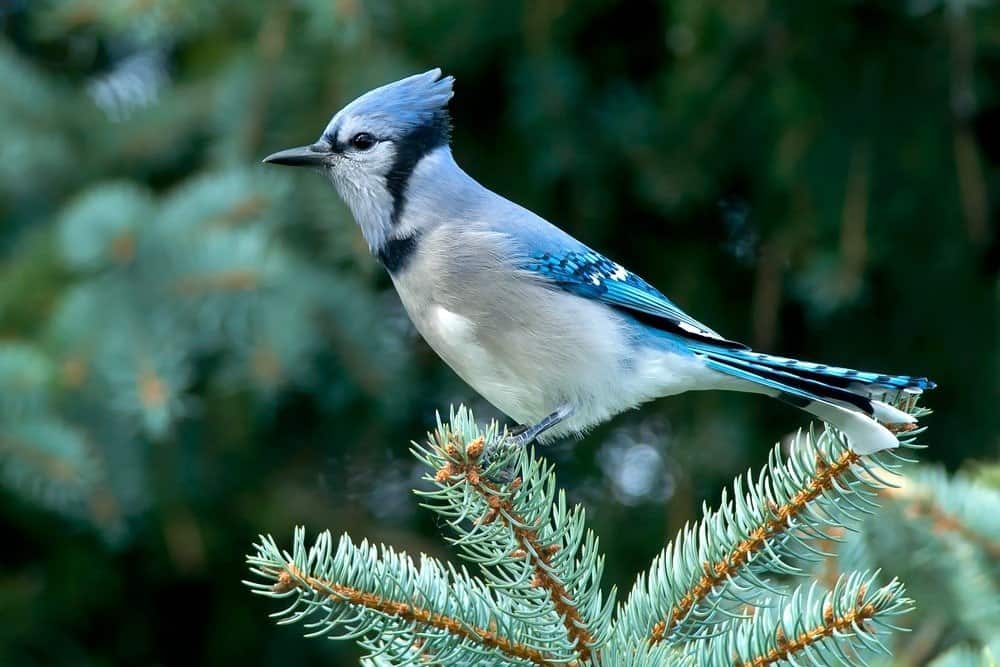
The
blue jay
is another year-round inhabitant of Georgia in urban/suburban environments and forests.
©Paul Reeves Photography/Shutterstock.com
Where it lives: Blue jays live year-round in Georgia and the rest of the eastern half of the country. They live in many forest habitats but like to inhabit areas closer to the edge than the interior. You can also find them in urban and suburban environments.
How it looks: They are blue above and white below with black and white patterns and a black necklace. They also feature a prominent blue crest.
What it eats: Their diet is made up of insects, nuts, seeds, eggs, nestlings, frogs, and carrion.
How it behaves: They are noisy birds that gather in loose flocks to forage on the ground. These intelligent creatures form tight family bonds.
White-Breasted Nuthatch
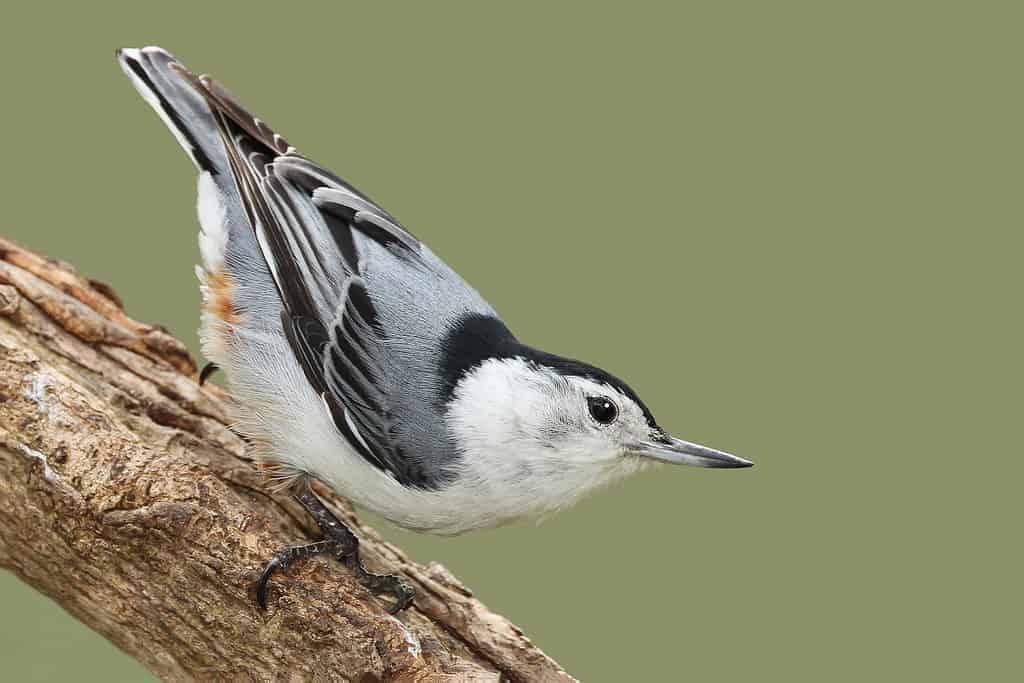
The nuthatch has bluish gray above, white below, a black cap, and heavy streaking on its wings and tails.
©Brian Lasenby/Shutterstock.com
Where it lives: The white-breasted nuthatch lives year-round in Georgia, except for the far southeastern portion of the state, where it is absent. They inhabit mature woodlands and deciduous forests, but you can also find them in suburban parks and backyards.
How it looks: These compact birds appear to have no necks and short tails. They are bluish gray above and white below, with black caps and heavy streaking on their wings and tails.
What it eats: Beetles, larvae, ants, caterpillars, spiders, seeds, and nuts make up their diet.
How it behaves: They move at odd angles among the main branches of large trees. They forage in large mixed flocks during the winter.
Purple Martin
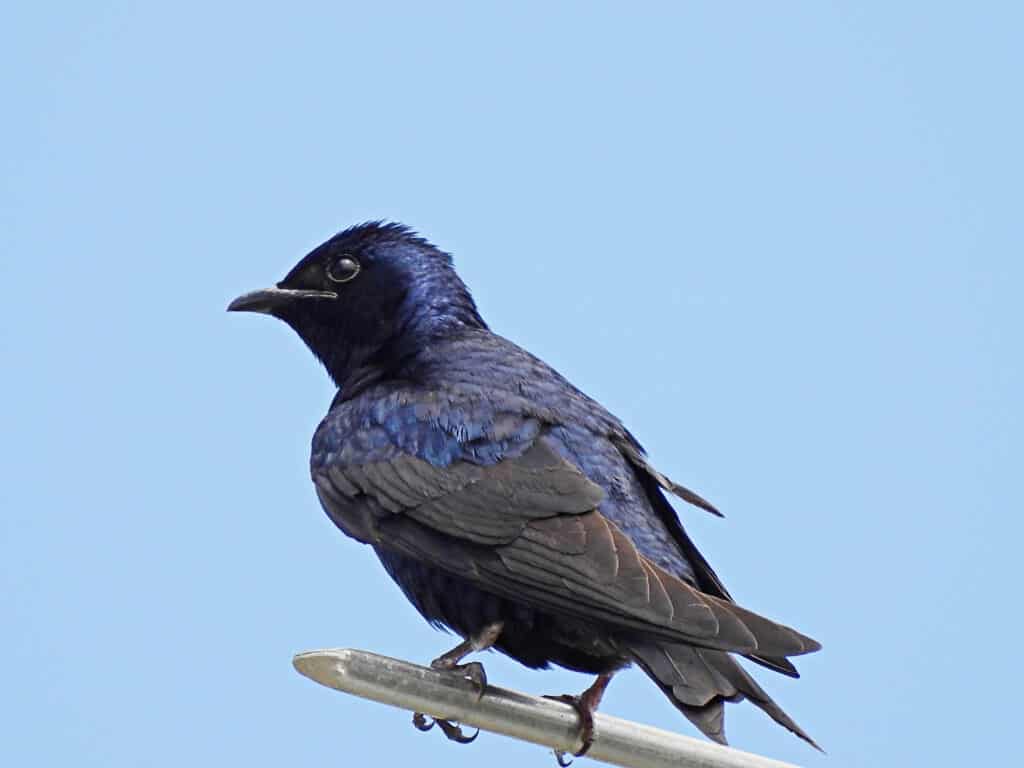
These birds are a deep, dark bluish-purple and feature brownish-black wings and tails.
©iStock.com/passion4nature
Where it lives: Purple martins breed throughout Georgia and the rest of the Eastern United States. They are common in parks, cities, towns, dunes, meadows, and ponds.
How it looks: They are large, chunky swallows with hooked bills and tapered wings. These birds are a deep dark bluish-purple and feature brownish-black wings and tails.
What it eats: Flying insects and small bits of gravel comprise their meals.
How it behaves: They love nest boxes and can be found in many suburban backyards during the summer. They forage for insects higher up than other swallows, except for the evenings when they look for food closer to their roosting sites.
Indigo Bunting
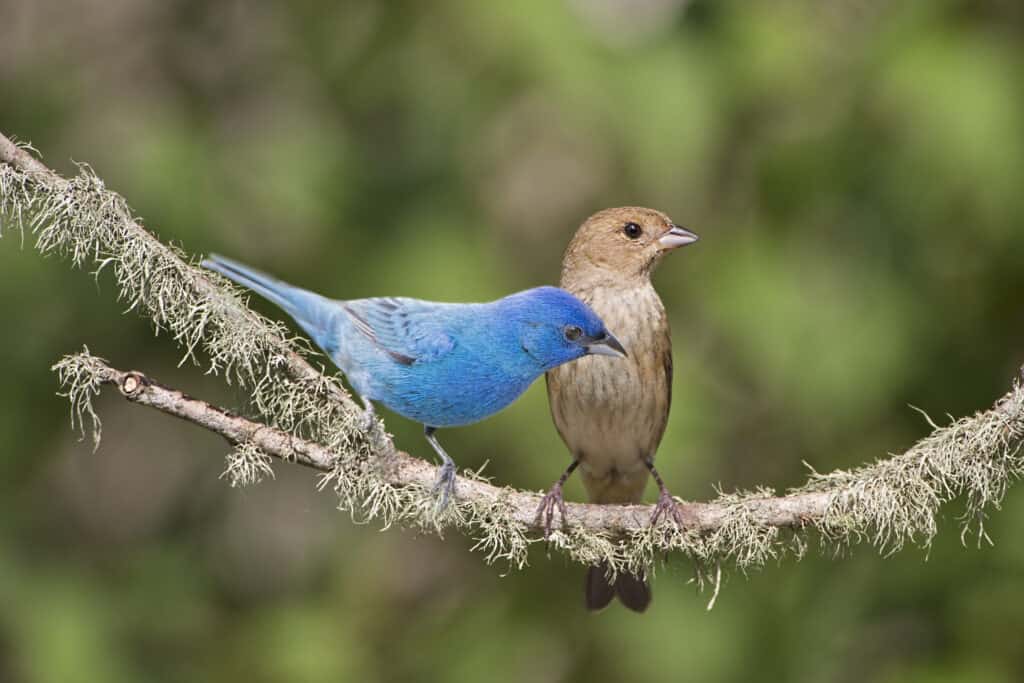
The indigo bunting breeds throughout Georgia in brushy or weedy areas near roads, streams, and rivers.
©Bonnie Taylor Barry/Shutterstock.com
Where it lives: The indigo bunting is a breeding bird of the Eastern United States, including Georgia. They prefer brushy and weedy areas along roads, streams, rivers, and abandoned fields.
How it looks: About the size of a sparrow, the indigo bunting is stocky with a short tail. They are blue all over with darker heads, silver bills, and dark streaking in the wings and tails.
What it eats: Berries, buds, seeds, and insects are their favorite foods.
How it behaves: They are the quintessential cheerful songbird and grace every spring and summer with their bouncy tune. They forage at many levels, from the ground to shrubs and trees.
Common Grackle
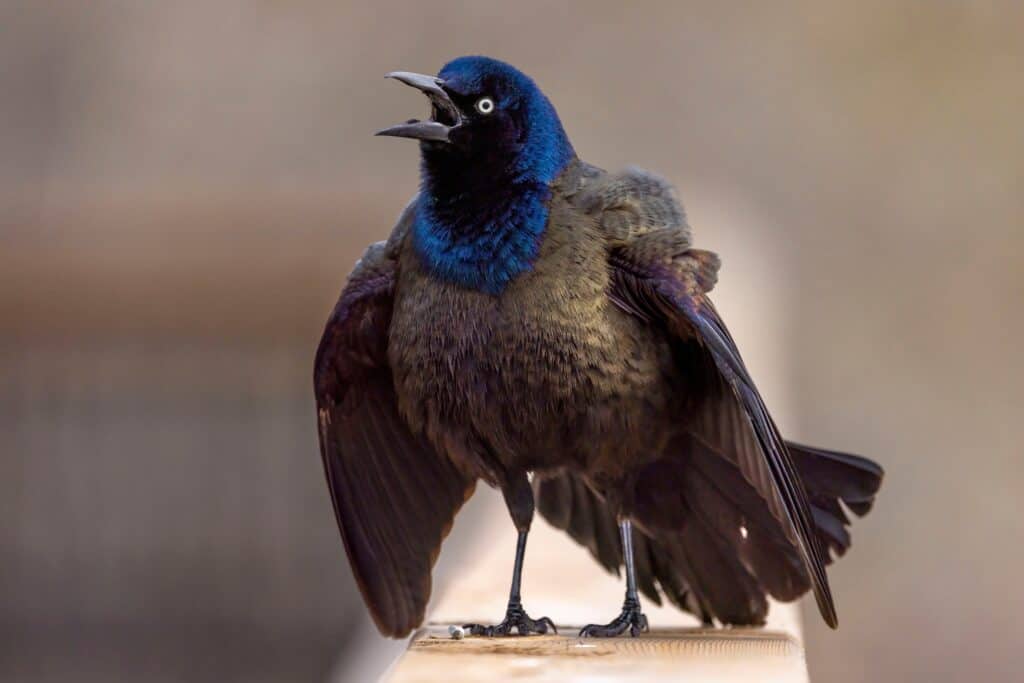
Large and lanky, the common grackle is about the same size as a
mourning dove
.
©Kendall Collett/Shutterstock.com
Where it lives: The common grackle is a familiar bird of the suburbs throughout the east. You will find them year-round in Georgia, where they inhabit towns, farms, backyards, and gardens.
How it looks: Large and lanky, the common grackle is about the same size as a mourning dove. They have iridescent plumage featuring green and blue heads, bronze bodies, and purple wings.
What it eats: They prefer to eat seeds, fruits, insects, spiders, crustaceans, fish, frogs, mice, birds, and garbage.
How it behaves: They flock with blackbirds and starlings, steal food from other birds, and walk around on their long legs looking for food.
Painted Bunting

Some painted bunting populations breed along Georgia’s coastline in thickets and woodland clearings.
©iStock.com/passion4nature
Where it lives: The painted bunting is typically found around the Gulf of Mexico in the U.S., but some populations breed along Georgia’s coastline. During breeding, you can find them in thickets, hedgerows, and woodland clearings.
How it looks: These brightly colored birds are stocky and look finch-like. They feature blue heads, red breasts, green shoulders, and orange backs.
What it eats: Seeds and insects are their preferred snacks.
How it behaves: They hide in dense environments, so they are hard to spot. They forage mostly on the ground and sometimes in mixed flocks.
Blue Grosbeak
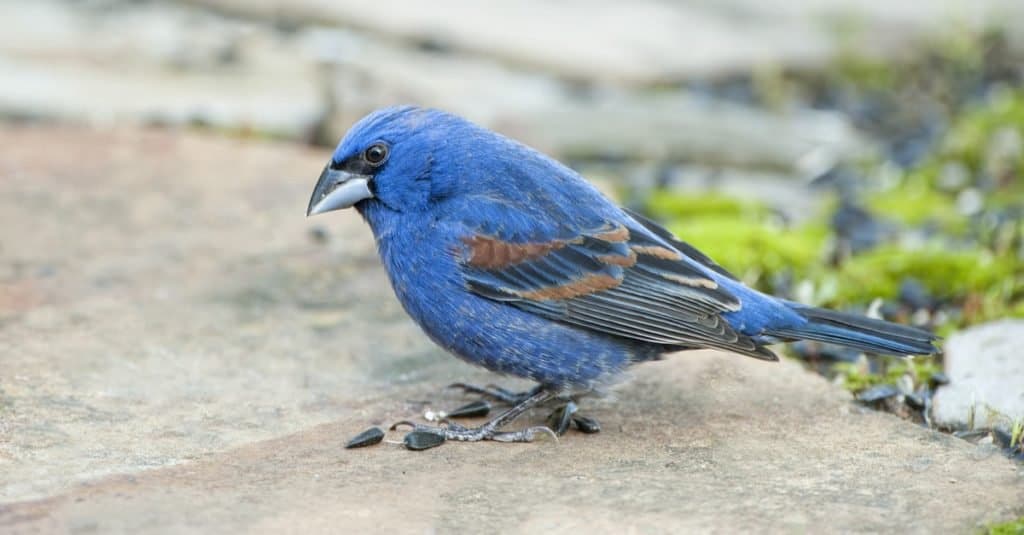
A blue grosbeak is another breeding bird in Georgia; it inhabits dense low-growth near woodland edges.
©Bonnie Taylor Barry/Shutterstock.com
Where it lives: The blue grosbeak breeds in the Southern United States, including throughout Georgia. You can find them in dense low growth during spring and summer. Look for them in semi-open country, like brushy fields and woodland edges.
How it looks: Breeding males are deep blue all over with chestnut wingbars and silver bills. They are large and stocky and have distinct triangular beaks.
What it eats: They enjoy grasshoppers, crickets, snails, seeds, and other insects.
How it behaves: You may find these birds perched on roadside wires, but they primarily stay hidden in dense brush. They forage on the ground or in low vegetation.
Little Blue Heron
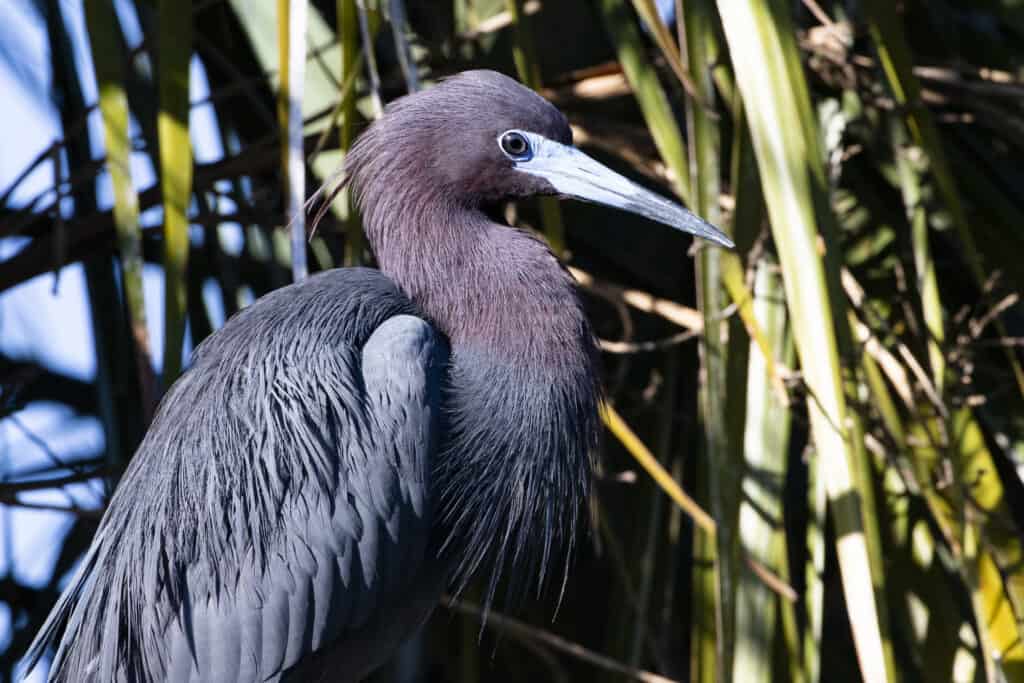
The little blue heron lives year-round in southern Georgia in freshwater habitats.
©iStock.com/Florence and Joseph McGinn
Where it lives: The little blue heron lives year-round in Southern Georgia, and some breeding populations make their way to the central portions of the state. They live primarily in freshwater inland, such as marshes, swamps, ponds, and rice fields.
How it looks: They are smaller herons with long legs and dagger bills. They have bluish-gray bodies and maroon necks and heads.
What it eats: Fish, amphibians, crustaceans, and insects are their favorite dinners.
How it behaves: You will mainly find these birds alone or in pairs wading at the edges of shallow water near vegetation.
Great Blue Heron

Great Blue Herons are abundant in North America and live in Georgia throughout the year.
©Brian Lasenby/Shutterstock.com
Where it lives: The great blue heron is abundant in Canada, Mexico, and the United States. This graceful bird lives in Georgia year-round and inhabits marshes, swamps, and shores.
How it looks: This heron is very large and tall, with long long legs, a long neck, and a dagger-like bill. They are bluish-gray all over with a long black stripe over their eye.
What it eats: These birds eat fish, amphibians, reptiles, insects, birds, and small mammals.
How it behaves: They move slowly and methodically through shallow water along shorelines, river banks, and marsh edges. They use their long beaks to quickly snap up fast-moving prey.
Belted Kingfisher
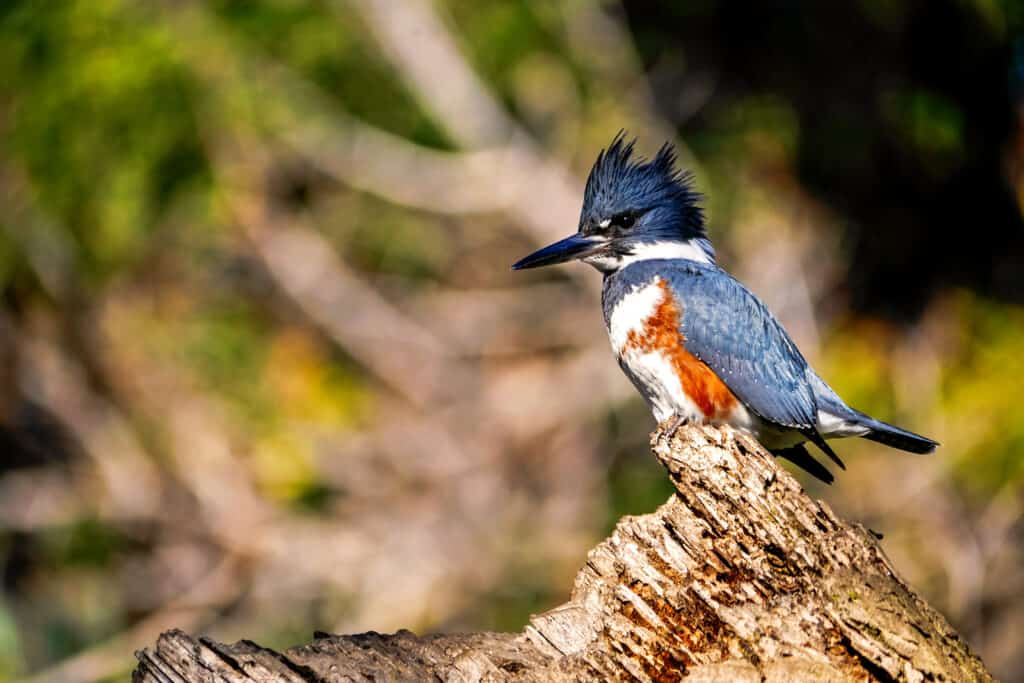
Belted kingfishers live in various aquatic habitats, such as streams, coasts, bays, and marshes.
©Horse Crazy/Shutterstock.com
Where it lives: Another abundant water bird, the belted kingfisher lives across most of North America. You can find them year-round in Georgia, where they live near streams, coasts, bays, marshes, and estuaries.
How it looks: These large-headed birds have shaggy crests and thick bills. Their plumage is bluish-gray on their heads, backs, and wings. And their collars and undersides are white with patches of chestnut.
What it eats: Fish, crustaceans, insects, amphibians, reptiles, and small mammals are their food sources.
How it behaves: They perch on riverside branches, make loud rattling calls, and forage by plunging into the water headfirst.
| Species | |
|---|---|
| 1. | Eastern Bluebird |
| 2. | Blue Jay |
| 3. | White-breasted Nuthatch |
| 4. | Purple Martin |
| 5. | Indigo Bunting |
| 6. | Common Grackle |
| 7. | Painted Bunting |
| 8. | Blue Grosbeak |
| 9. | Little Blue Heron |
| 10. | Great Blue Heron |
| 11. | Belted Kingfisher |
The photo featured at the top of this post is © Eleanor McDonie/Shutterstock.com
Thank you for reading! Have some feedback for us? Contact the AZ Animals editorial team.






